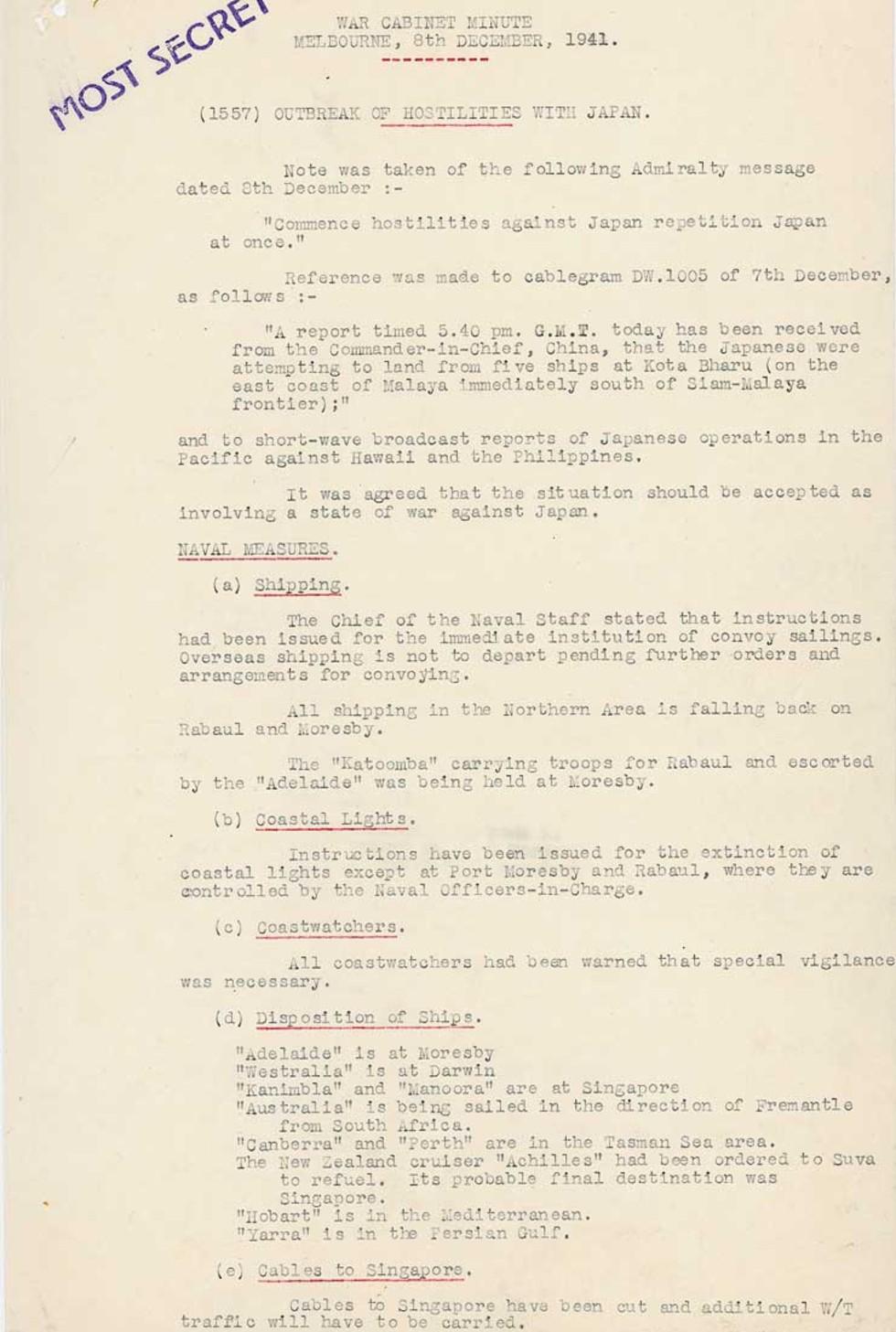
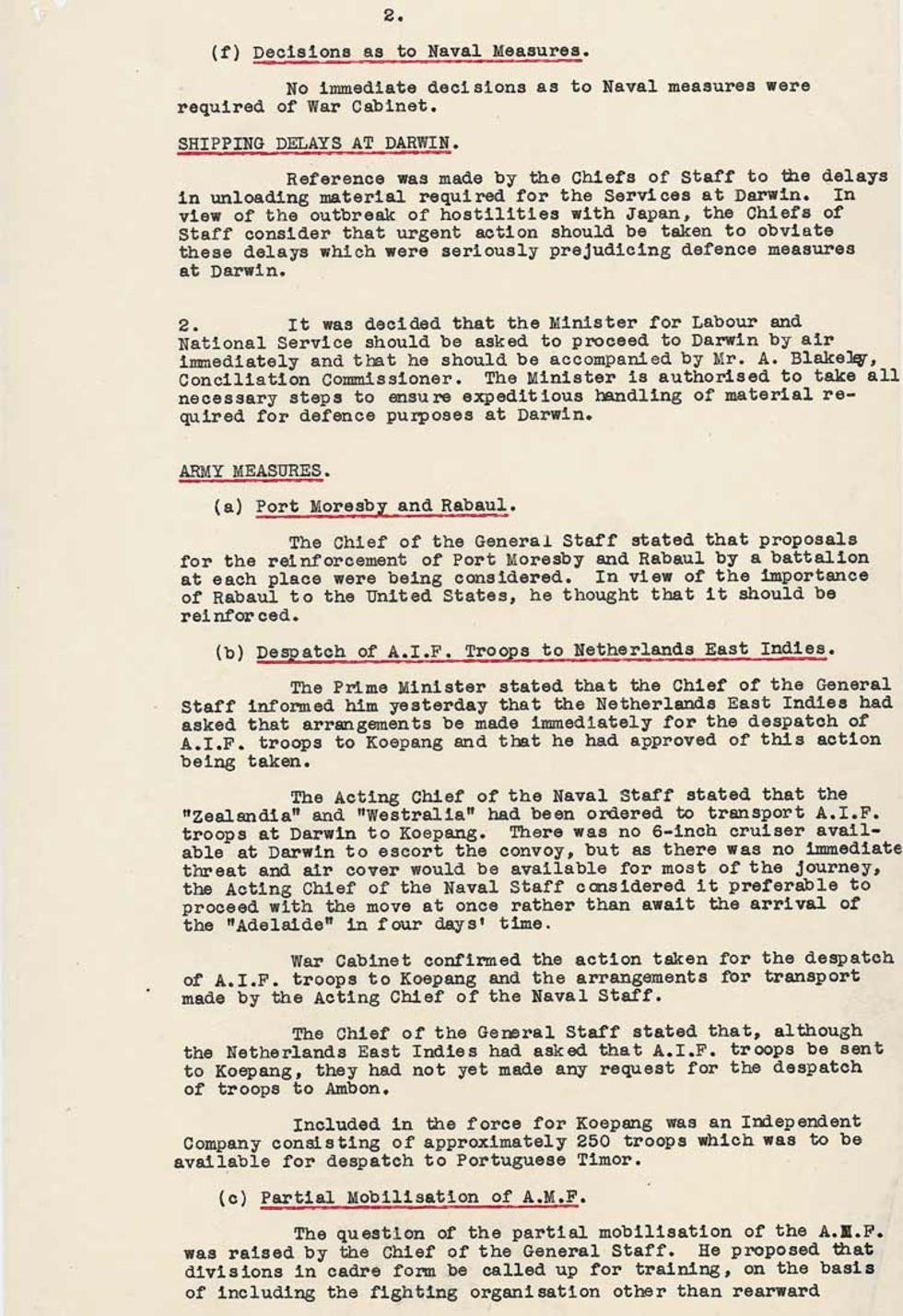
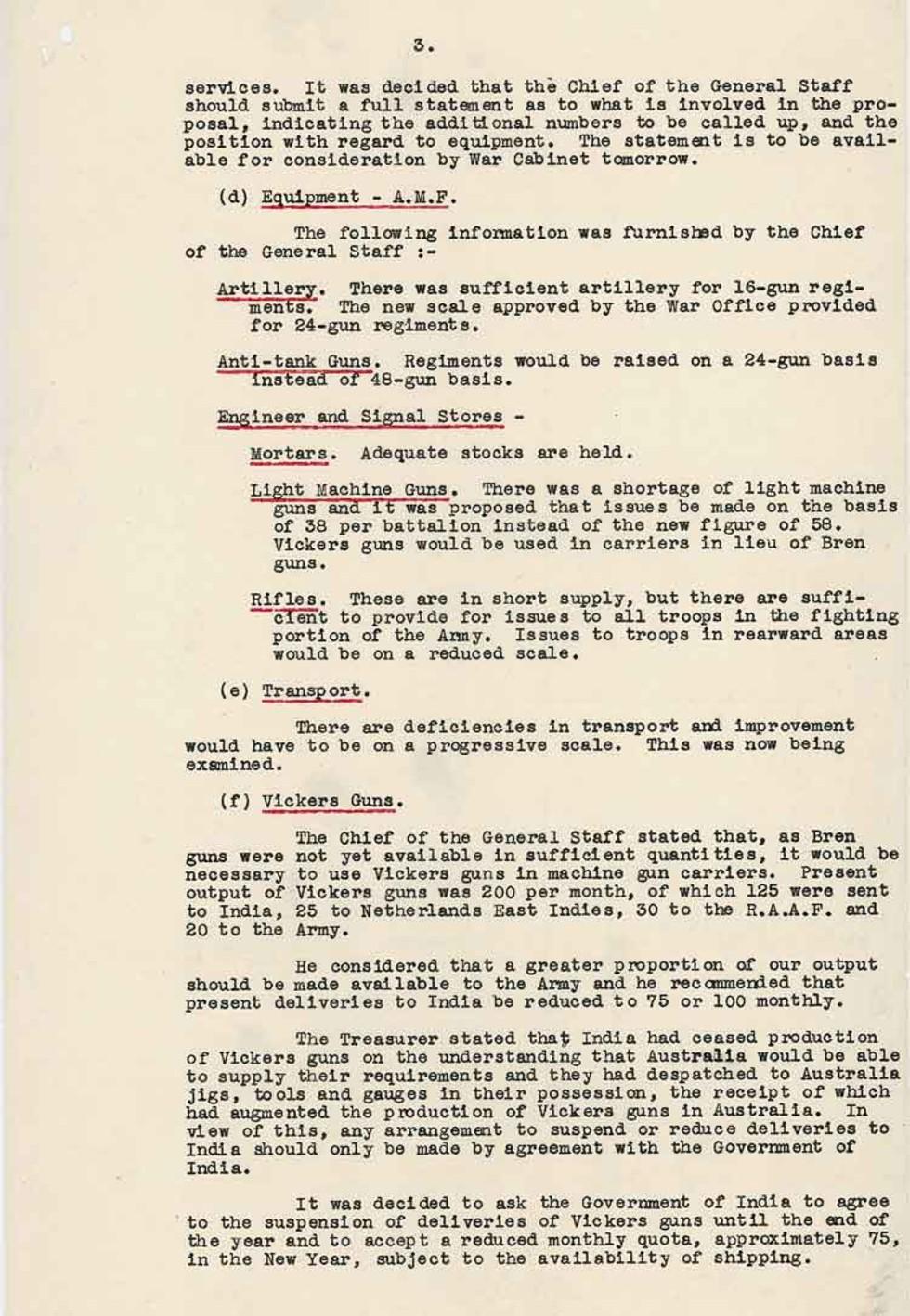
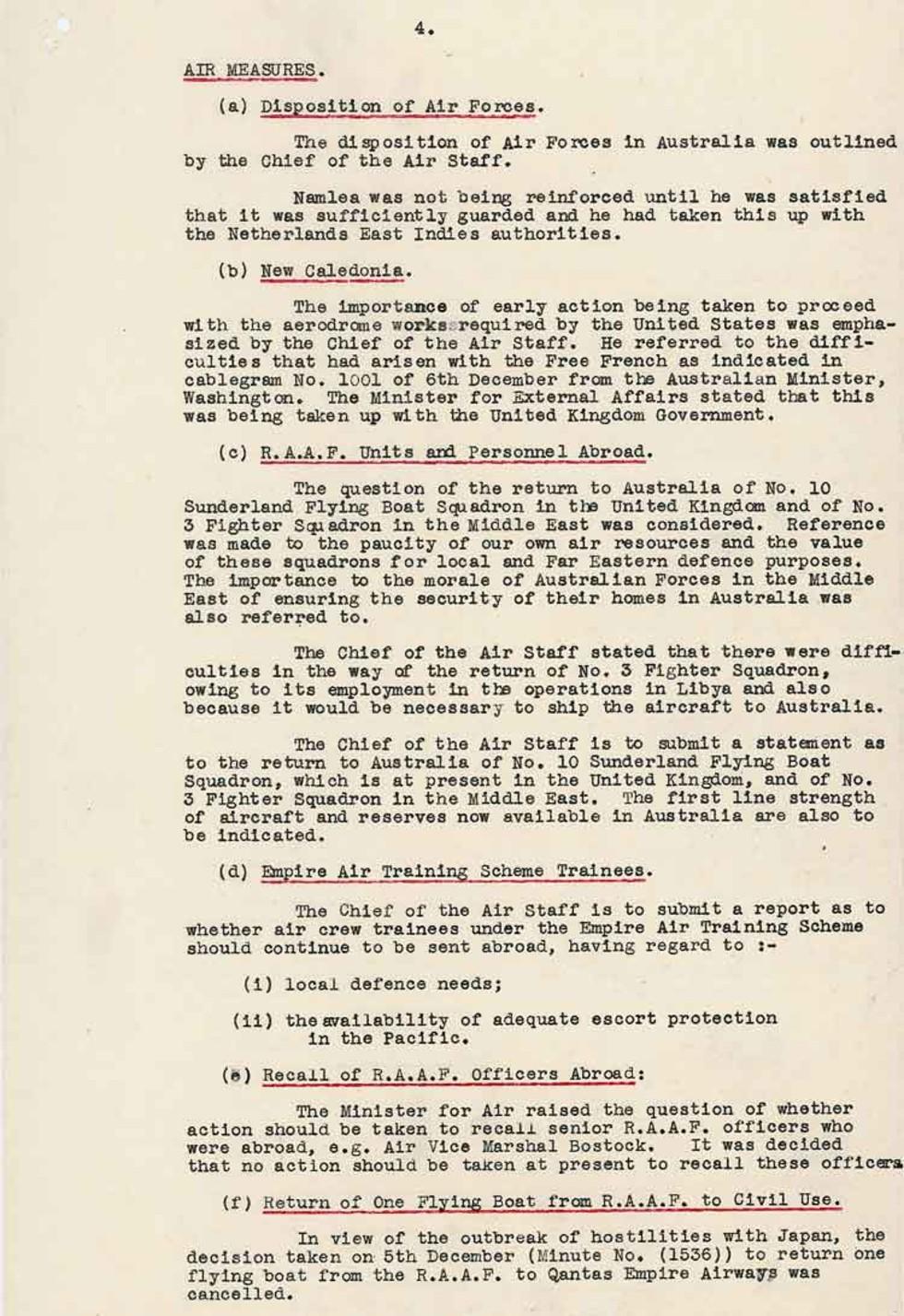

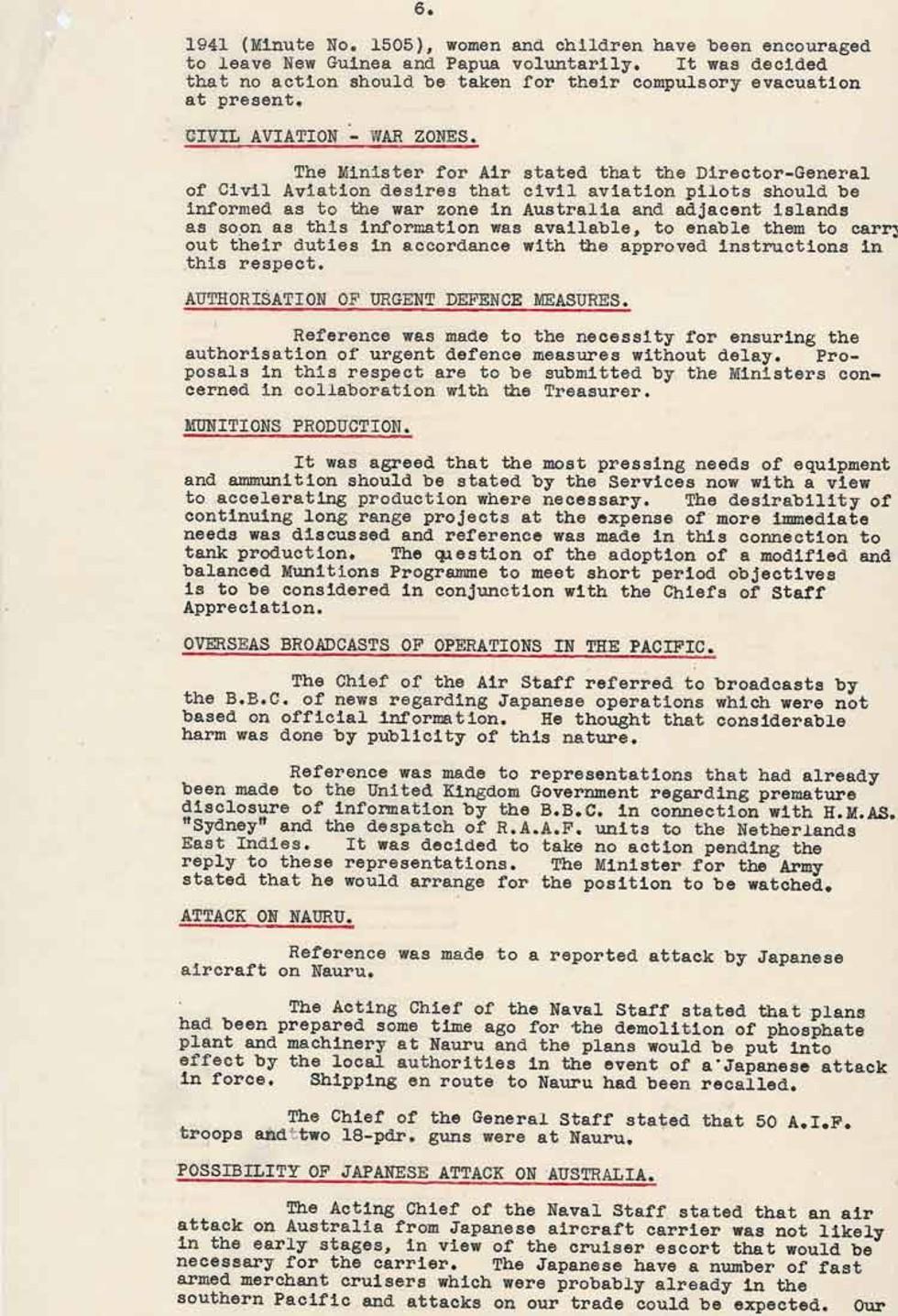
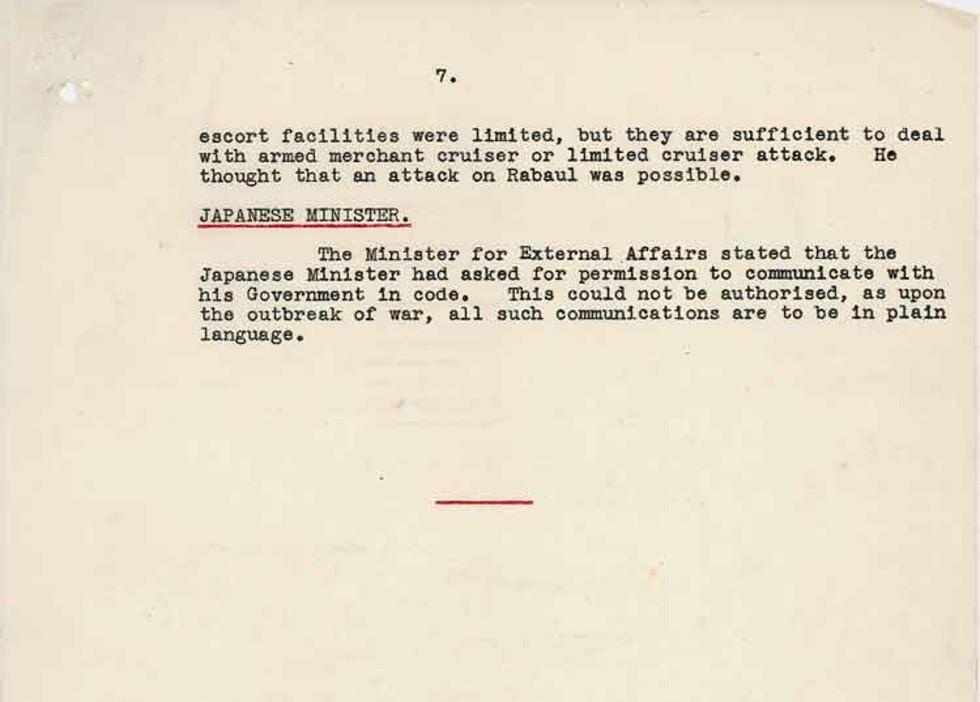
Aboriginal and Torres Strait Islander people should be aware that the National Archives' website and collection contain the names, images and voices of people who have died.
Some records include terms and views that are not appropriate today. They reflect the period in which they were created and are not the views of the National Archives.








This is the record of discussions and decisions of a meeting of the Australian War Cabinet held in Melbourne on 8 December 1941. Stamped 'MOST SECRET', the record includes the Cabinet's decisions on the naval, army and air force measures to be put in place now that Australia was at war with Japan. It also canvasses the strategic situation in Asia, the actions to be taken in the Australian region, the need to accelerate munitions production, the protection of shipping, and the possibility of Japanese attacks on Australia and its territories.
Learning resource text © Education Services Australia Limited and the National Archives of Australia 2010.
Learn how to interpret primary sources, use our collection and more.
